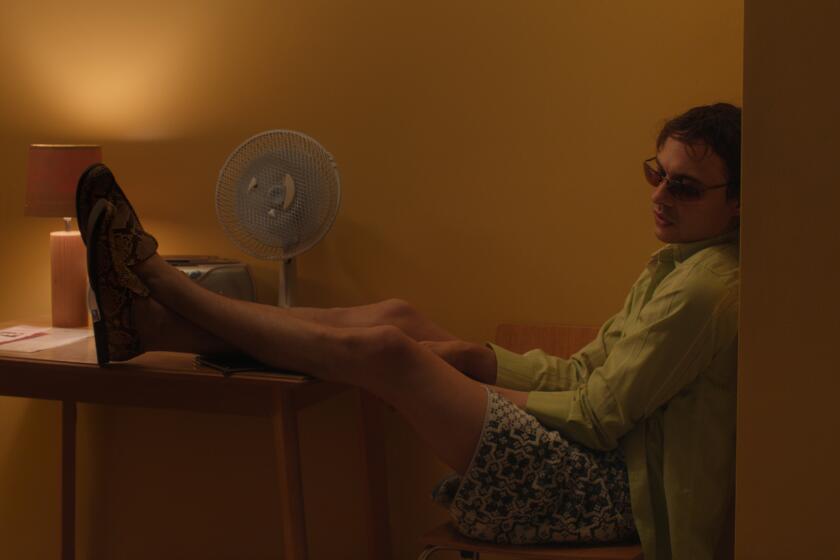Immigrant caravans and Mexican cartels: ‘Blood on the Wall’ tracks human toll of failed policies
- Share via
Discussions of immigration and drugs, especially in an election year, tend to be limited to the impact within the U.S. “Blood on the Wall,” directors Sebastian Junger and Nick Quested’s dense dive into the failed policies, political corruption and economics that drive both immigration and narco-trafficking in Mexico, primarily approaches these topics from the southern side of the border.
Utilizing you-are-there reporting and the commentary of political analysts, journalists and former government officials, Junger and Quested overlay two tangled and tragic story lines. In one, the grim documentary chronicles the thriving drug production and distribution industry run by Mexico’s cartels and the corrupt political system that allows narcotics and weapons to flow freely across the U.S. border. In the other, they follow groups of migrants making their way north from Central America as part of the caravans that made headlines in 2018 and 2019.
In Mexico, citizens are drawn into the drug trade — be it growing poppies, processing heroin, cocaine and crystal meth or running contraband into the U.S. for the cartels — due to the lack of decent job opportunities. The nation’s history of corruption, an inert economy and the unflagging demand for the drugs in the U.S. have fueled the situation for decades and there are few signs of improvement under President Andrés Manuel López Obrador after nearly two years in office. Violence and murder rates continue to surge.
Parallel to this are the thousands of refugees attempting to flee extreme poverty and violence in Guatemala, El Salvador and Honduras, the so-called Northern Triangle (an ongoing humanitarian crisis exacerbated by failed U.S. foreign policy). Once they cross the Suchiate River from Guatemala and head north through Mexico, the migrants face a more than 2,000-mile journey. Vulnerable to being robbed, abducted, raped or killed, many join the caravans, which provide some measure of safety in numbers.
The filmmakers focus on Ludy, a 17-year-old Honduran girl traveling with her boyfriend and his friends, and the family of Sara, a Guatemalan woman leaving her abusive husband. It’s an arduous trek and we see the visible toll it takes. Driven by the desire for a better life, they endure the hardships with little apparent knowledge of what lies ahead, such as the encampments that await in Mexicali or the potential for being detained and separated by ICE if they cross into the U.S.
The film’s two brutal narratives — the caravans and the web of narco-trafficking — don’t always coalesce and may have benefited from a longer format. The filmmakers are tackling a broad, evolving topic and the documentary struggles to maintain a throughline.
By the end of the film the broader political cause-and-effect, at least as laid out by Junger and Quested, is clear. The solutions, however, are not. Generations in the making, these staggeringly complex problems are hemispheric in their impact and cannot be resolved by any wall, bloodied or not.
‘Blood on the Wall’
In English and Spanish with English subtitles
Rated: TV-14
Running time: 1 hour, 33 minutes
Playing: 9 p.m. Sept. 30, National Geographic Channel
More to Read
Only good movies
Get the Indie Focus newsletter, Mark Olsen's weekly guide to the world of cinema.
You may occasionally receive promotional content from the Los Angeles Times.











